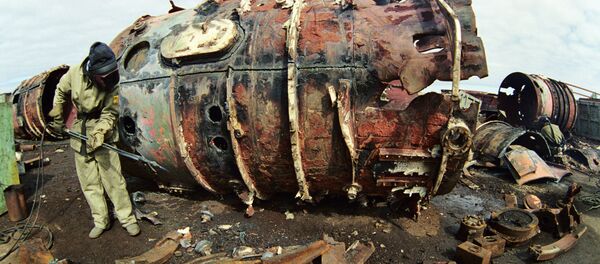The public policy institution, which mostly focuses on American national security and the country’s relationship with its major partners, invited three contributors to “examine several possibilities — not predictions — for the course of US-Russian relations in the next two to three years.”
The volume was edited by Paul J. Saunders, Executive Director at the Center for the National Interest.
The three suggested developments include: a “Functional Relationship” between the two, a “Divided Alliance” and an “Enduring Confrontation”.
“The scenarios are not predictions. Instead, they are efforts to assess how existing trends could shape the US-Russia interaction by examining the incentives and pressures each government faces, their policy choices, and possible actions by other parties, especially in Ukraine and Europe,” says the introduction to the report.
“Functional Relationship”
Samuel Charap outlined a best-case scenario in which the United States and Russia relax tensions enough to pursue a “functional relationship.”
“A slow, uncertain, and fraught process of normalization moves forward. There is no 'reset,' but there is an end to the crisis in United States-Russia and West-Russia relations and the two sides begin to define 'a new normal.'”
The author however acknowledges that “such an outcome is unlikely.”
“It would depend on both stability, that is, managing disagreements on destabilizing issues, and compartmentalization, in which disagreements are still pursued with vigor, but the two countries are able to collaborate on mutual interests,” the National Interest magazine quotes him as saying.
“The result would be similar to the current relationship between the United States and China —adversarial, but cooperative on many issues.”
“Divided Alliance”
“Because few are willing to confront Russia on a sustained basis, many European governments see a mostly effective ceasefire and the beginning of a political process in Ukraine as sufficient to allow for the slow resumption of ties to Russia, despite objections from Russia-skeptic European nations and the United States that Crimea, Donetsk and Luhansk remain outside Ukrainian government control. By mid-2016, these governments are prepared to declare Ukraine’s tentative peace a victory and move on.”
“In parallel, European business leaders and publics begin to conclude that breaking Ukraine out of Russia’s orbit and rebuilding it along European lines is not only too expensive but unnecessary.”
“Western European 'Ukraine fatigue' and a growing focus on more pressing crises, such as terrorism and Syrian refugees, may lead to a realization on the part of some nations that cooperation with Russia is necessary.”
“As the political and economic interests of individual European countries regain prominence in policymaking towards Russia in 2016, new sanctions against Moscow become a nonstarter. More than that, advocates for sustaining the sanctions already in place find it difficult to do so as several European capitals become more ambivalent about appeals to maintain trans-Atlantic and European solidarity at their expense. Most non-Crimea sanctions end in mid- 2016.”
Should the United States make containing Russia the central organizing principle of its foreign policy, even if it further strains ties to key European governments?
Or should Washington focus on Beijing?
Senior military leaders advise the president that declining budgets, an exhausted force, and divisions inside NATO require a choice between the two — America cannot do both.
“Enduring Confrontation”
The section, contributed by Matthew Rojansky, “envisions the Ukraine-Russia confrontation developing into a frozen conflict similar to Moldova-Transnistria, but on a much larger scale.”
“Ukrainian politics will be business as usual, with the spirit of Maidan still alive but the energy to effect change squelched by previous disappointments.”
US politicians, in turn, will continue “Russia-bashing,” which the author referred to as an “easy and cost-free” way to score political points. This would produce an enduring confrontation.
In conclusion, Paul J. Saunders states that “whether or not one views each particular event described in the three preceding scenarios as probable or improbable, the narratives demonstrate that the future evolution of the US-Russia relationship is far from preordained and that it could have profound implications for US national interests.”
“Most troubling are the potential consequences should America’s interactions with Moscow get worse.”
“Unfortunately, collisions between leading states involving existential issues can be quite dangerous, especially when many of the parties possess nuclear weapons."
"Trying to avoid those collisions, or at least to minimize the resulting damage to vital US national interests, is a good reason to look ahead at the road we are on.”







